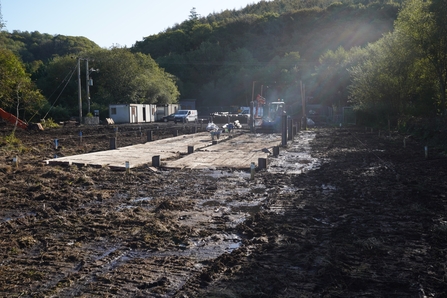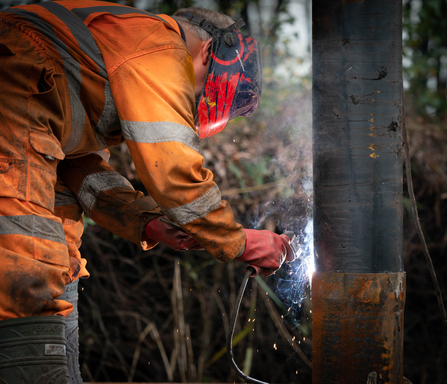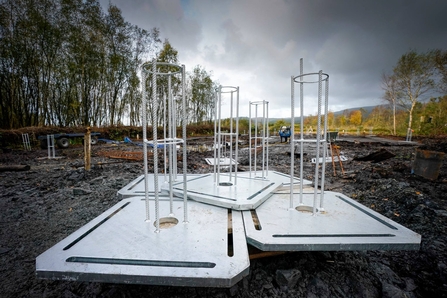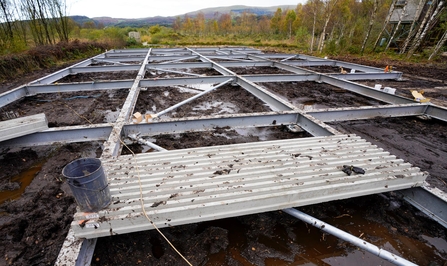The Dyfi Wildlife Centre is not built on solid ground, but sits on the edge of Cors Dyfi a lowland peat bog. The peat deposits extends throughout the lower reaches of the Dyfi Valley and connect to the National Nature Reserve of Cors Fochno near Borth. 'Cors' is the Welsh word for bog. Lowland peat bogs are wet places with unstable ground that requires specialist building methods to stop the structure sinking into the bog forever.
To build using traditional methods would have required a huge quantity of concrete and destruction of the peat. Instead the building sits on 33 steel piles that each go down into the ground around 16m. The combined surface area of all 33 piles is just 1.6m2, that is less than the area of a single bed!

Wooden bog matting was used during the pile driving process to protect the ground and prevent the machinery sinking!

Each pile is made up of 8 x 2m sections of steel tube that are welded together as they are pushed into the ground. There are two thicknesses of tube: 'Skinny' 20cm diameter ones around the edge of the building and 'Fat' 28cm diameter ones in the centre to carry more load.
Once the steel tubes were in the ground they were carefully pumped full of concrete before being cut to the correct level above the surface. The piles have been engineered to support 2,490 tonnes - that's the equivalent of 922 African elephants.

The final stage of the process was the topping of each pile with a galvinised end cap to support the steel sub-frame of the building.

The steel subframe sits on top of the end caps, well above the surface of the bog. This means that the peat underneath is not damaged by the building and wildlife can still pass underneath the building if it wants to.